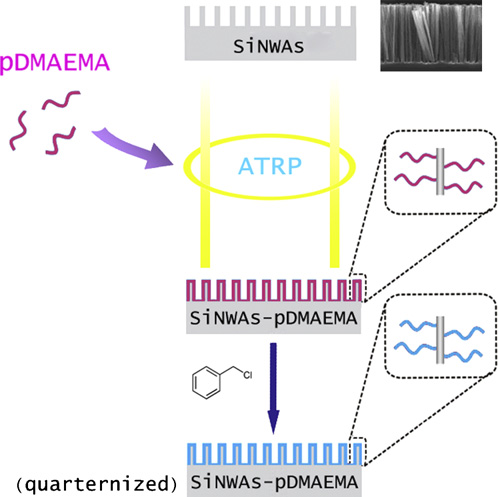High antibacterial efficiency of pDMAEMA modified silicon nanowire arrays
Colloids and Surfaces B: Biointerfaces,
2011,
83,
355-359.
文章链接:http://dx.doi.org/DOI: 10.1016/j.colsurfb.2010.12.009
王宏炜副教授在Colloids and Surfaces B: Biointerfaces上发表研究论文
发布日期:2011-04-13
Materials of high antibacterial activity based on quaternized poly (2-(dimethylamino ethyl) methacrylate)(pDMAEMA) have been developed. DMAEMA was graft polymerized on silicon nanowire arrays (SiNWAs) by atom transfer radical polymerization (ATRP), and quaternized using benzyl chloride. The graft density on the modified nanowire arrays was much higher than on analogous smooth silicon, leading to higher bacterial adhesion on the nanowire arrays (34.6±0.39×106 vs. 5.0±0.15×106 cells/cm2). Incubation of Escherichia coli on the substrates for 18 h resulted in 95% cell death on the quaternized nanowire material compared to less than 45% on the quaternized smooth silicon. The results suggest that silicon nanowire array modified with quaternized pDMAEMA is a highly effective antibacterial material due to a high density of antibacterial polymer and consequent high bacterial adhesion and killing.

